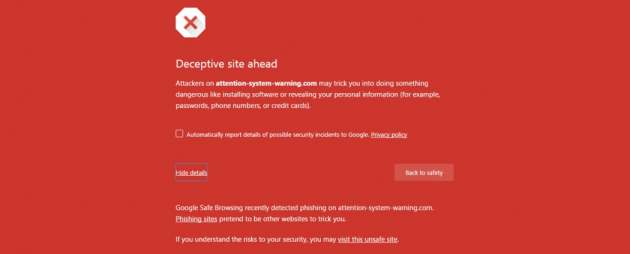Google Has Begun Blocking Sites That Contain Deceptive Ad Content
Warning page being shown to visitors before arriving at sites that display deceptive ad content
You've probably encountered a number of sites that are blocked by Google, indicated by red pages that issue warnings to deter visitors from potentially malicious online activity. Recently, Google has also started blocking sites that contain deceptive or misleading ad content which aims to trick the user into clicking or performing other actions. While the new block may come as bad news to some sites, the rest of us are somewhat surprised it has taken this long for such sites to be penalized.
What Kind of Sites Are Getting the “Deceptive Site” Block?
In particular, Google appears to be targeting sites that use some of the more common spammy ad tactics, including but not limited to:
-
Sites with pages that have decoy download buttons. Oftentimes such pages position the fake button directly next to the legit download button.
-
Sites with pop-ups that give false alerts of malware infections supposedly found on visitors' computers.
-
Any other sites that use deceptive techniques or scare tactics to trick visitors into clicking an object or providing personal information (i.e. – phone numbers, credit card numbers, passwords, etc.)
Google Extending Safe Browsing Technology
The new deceptive ad content block is part of Google's Safe Browsing campaign – the same technology behind the other red warning screens that block visitors from landing on potentially malicious or misleading webpages.
Previously, such blocks were only reserved for sites that were considered unsafe due to the presence of malware. However, in November 2015 Google started blocking sites that use social engineering tactics to trick people into revealing personal information or installing software.
Now, the new deceptive site block is not only penalizing sites that publish deceptive on-page content, but also those that embed deceptive advertorial content as well, even if that content is being served up by a third-party advertising network.
Exactly What Kind of Ads Can Get Your Site Blocked?
Fortunately, Google has provided some examples of advertising types that could put your site at risk of being penalized:
If your site runs any ads like these, it would be a good idea to remove those ads and/or speak with the advertising network about how you can prevent such ads from being shown on your site.
Is It Too Late to Prevent Penalization?
Obviously, a huge number of sites online use ads similar to those shown above, including big names like Sourceforge and CNET. Does this mean that those sites and other reputable sites will be instantly penalized and inaccessible from Google's search engine when Safe Browsing is enabled? Not exactly. This appears to be a gradual rollout, so there should still be time left to take action. With that said, many advertising networks will probably stop allowing such ads in order to ensure compliance with Google's new standards.


